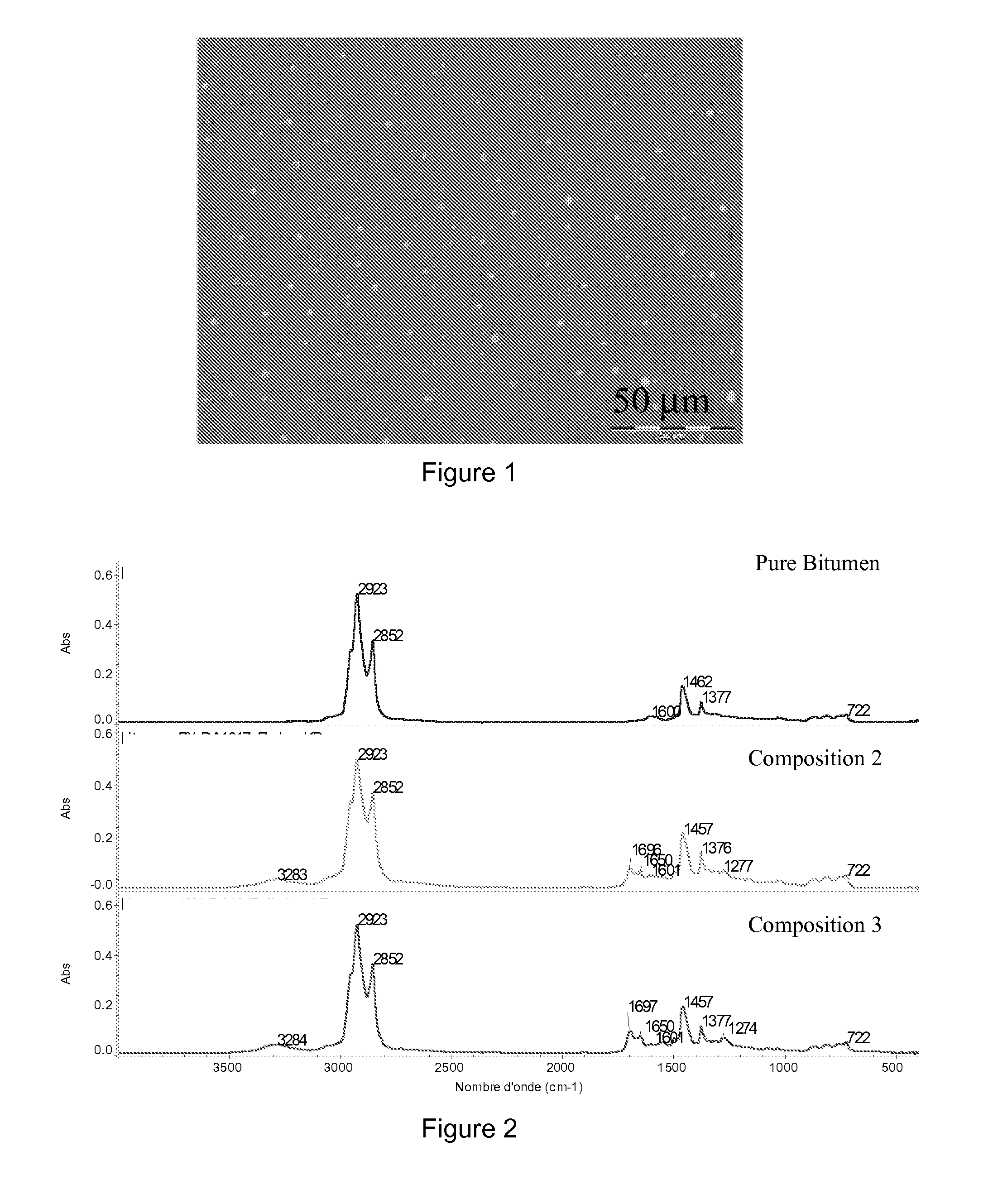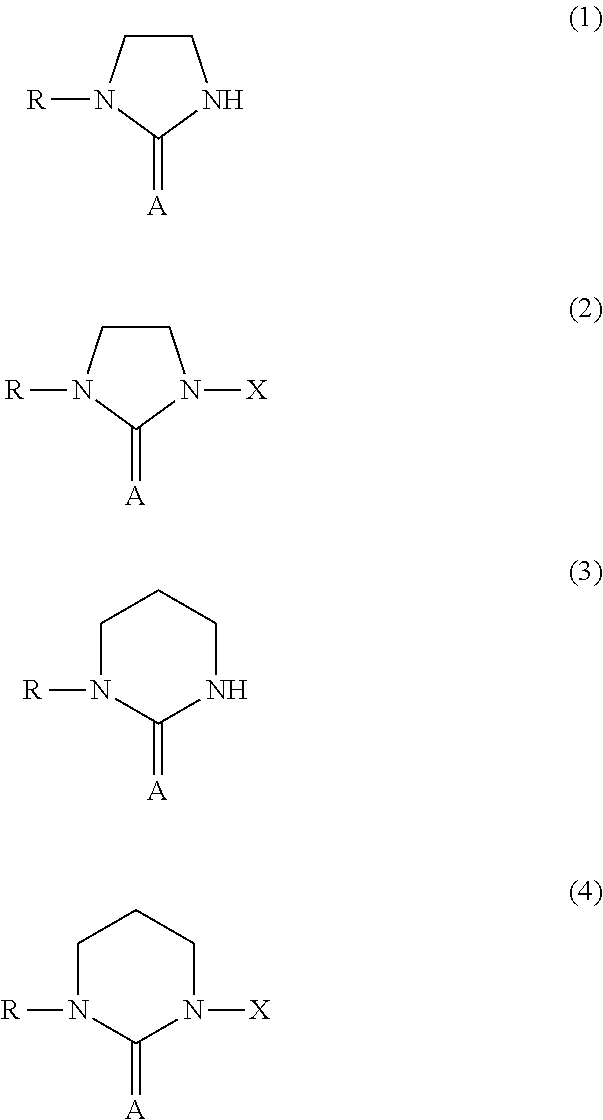Bituminous compositions
a technology of compositions and bitumen, applied in the field of modified bitumen, can solve the problems of large quantities of volatile solvents, pollute the atmosphere, and energy-intensive processes, and achieve the effects of facilitating the handling, flow, mixing and compacting steps, and improving fluidity
- Summary
- Abstract
- Description
- Claims
- Application Information
AI Technical Summary
Benefits of technology
Problems solved by technology
Method used
Image
Examples
example 1
[0127]The complex viscosity, storage modulus, G′, and loss modulus, G″, of two different supramolecular polymers, Supra 1017 and Supra 1040 obtained from the reaction of UDETA and different mixtures of dimer and trimer fatty acids were measured using a dynamical shear rheometer. Values for such parameters at 0.2 Hz at 140° C. and 25° C. are presented on Table 1. The value of a pure TOTAL bitumen with a penetration grade of 160 / 220 is also shown for comparison. It can be observed that the viscosity of the supramolecular polymers is not so different to that of pure bitumen at high temperatures, which allow their ease of mix. It can also be observed that the values for the modulus at room temperature are at least an order of magnitude higher than that of bitumen.
TABLE 1ViscosityG″G′G″G′(Pa s)(MPa)(MPa)Viscosity(MPa)(MPa)140° C.140° C.140° C.(Pa s; 25° C.)25° C.25° C.160 / 2200.183.2 × 10−7—2.1 × 1042.7 × 10−32.1 × 10−2BitumenSupra 10170.668.3 × 10−7—8.5 × 1061.12.3Supra 10400.506.3 × 10−...
example 2
[0128]The preparation of a supramolecular polymer modified bitumen was carried out by adding 5 parts of Supra 1017 in solid form into 100 parts of a TOTAL bitumen with a penetration of 160 / 220. The bitumen was previously heated to 140° C. and kept at that temperature under mild stirring conditions (about 100 RPM) during the addition of the Supra 1017. Once the Supra 1017 was added, the mixture was stirred for 15 minutes to obtained a homogenous mixture.
example 3
[0129]The storage modulus, G′, and loss modulus, G″, of two different supramolecular polymer modified bitumen compositions prepared as in example 2, were measured using a dynamical shear rheometer. Values for such parameters at 0.2 Hz at 60, 40 and 25° C. are shown on Table 2. Compositions 1, 2 and 3 were prepared by adding 2%, 5% and 10% of Supra 1017 into 160 / 220 bitumen respectively. Compositions 4, 5 and 6 were prepared by adding 2%, 5% and 10% of Supra 1040 into 160 / 220 bitumen respectively. As a comparison, a commercial polymer modified bitumen (PMB-SBS) provided by the Malet company, is a bitumen from TOTAL with a penetration grade of 160 / 220 modified with 2% of sulfur-crosslinked styrene-butadiene block copolymer.
[0130]It can be observed that Supra 1017 and Supra 1040 compositions improve the modulus values with respect to pure bitumen. It can also be seen that at the highest concentration of Supra 1017, composition 3, there is a decrement in the modulus values at 25° C. wit...
PUM
| Property | Measurement | Unit |
|---|---|---|
| Fraction | aaaaa | aaaaa |
| Fraction | aaaaa | aaaaa |
| Fraction | aaaaa | aaaaa |
Abstract
Description
Claims
Application Information
 Login to View More
Login to View More - R&D
- Intellectual Property
- Life Sciences
- Materials
- Tech Scout
- Unparalleled Data Quality
- Higher Quality Content
- 60% Fewer Hallucinations
Browse by: Latest US Patents, China's latest patents, Technical Efficacy Thesaurus, Application Domain, Technology Topic, Popular Technical Reports.
© 2025 PatSnap. All rights reserved.Legal|Privacy policy|Modern Slavery Act Transparency Statement|Sitemap|About US| Contact US: help@patsnap.com



